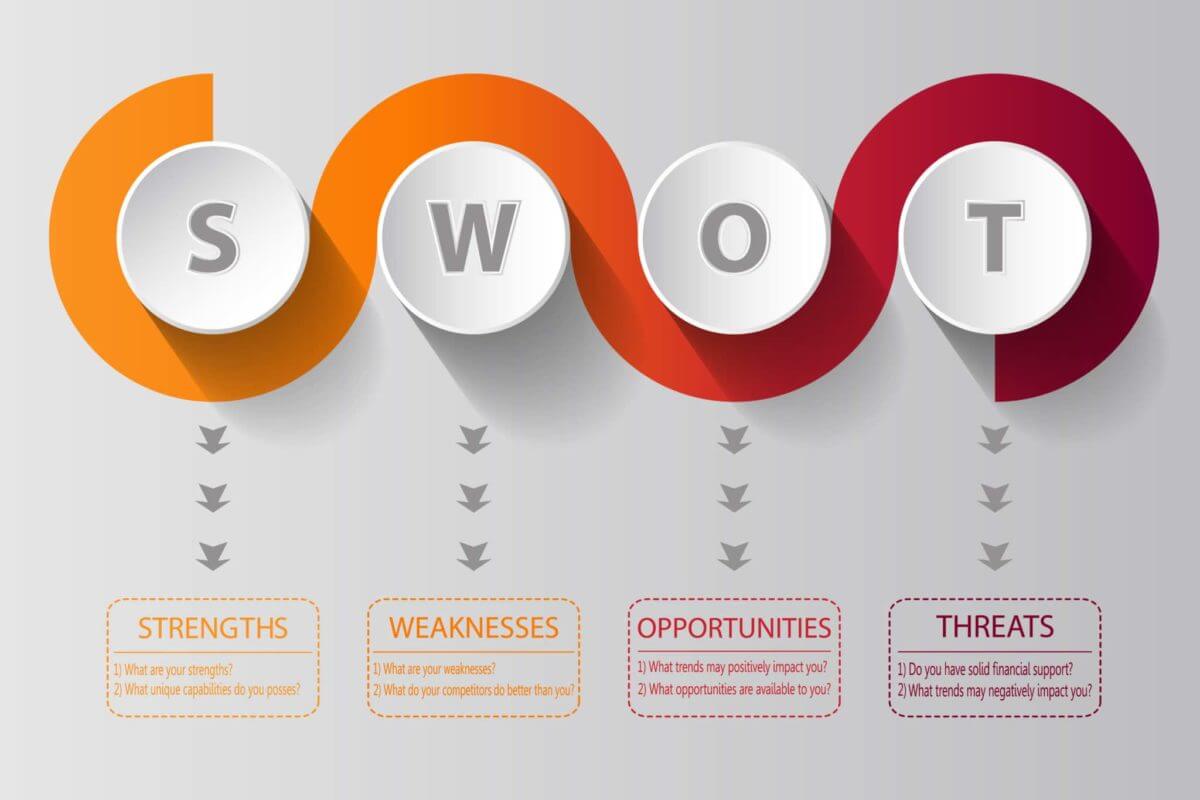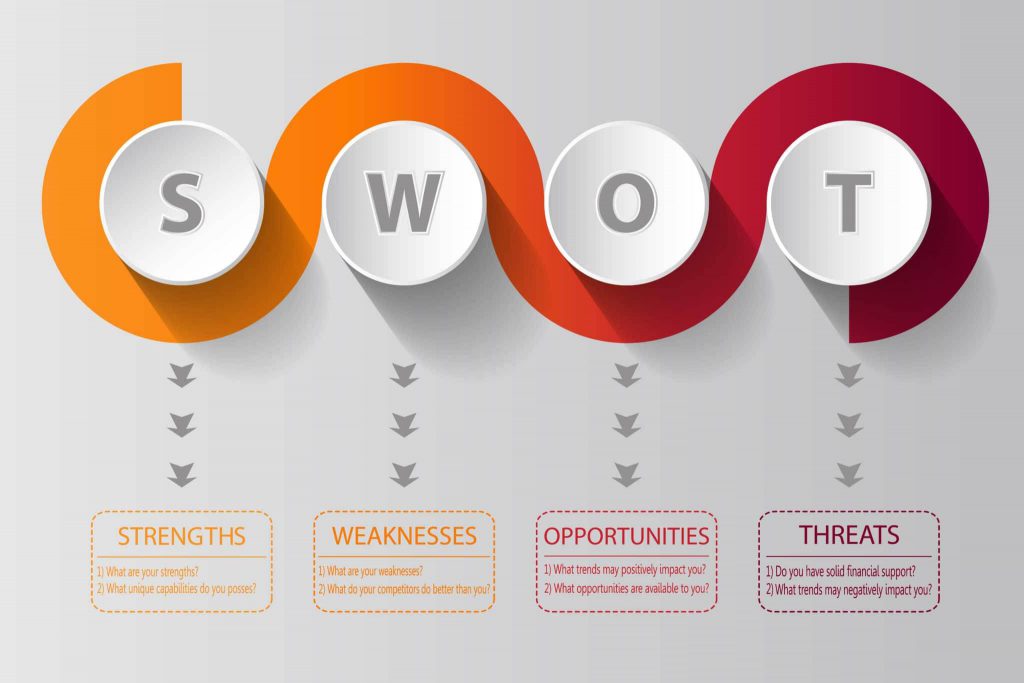
What is the SWOT analysis, and how’s it done?
SWOT analysis is one of the most powerful tools to create a personal, work, or business strategy and achieve the objectives you have in mind. It will help you evaluate the best and worst of a situation to have a complete picture of your decisions.
What is SWOT analysis?
A SWOT analysis (Strengths, Weaknesses, Opportunities, and Threats) is a planning and decision-making tool that helps you understand the internal and external factors of a situation that you want to improve, innovate or even prevent.
The origin of the SWOT analysis was the invention of Albert Humphrey, a consultant to the Stanford Research Institute. In the 1960s, he proposed to the strongest companies in the United States a long-term plan that was reasonable and executable.
Until then, US companies could not identify why their corporate strategies were failing. Therefore, this tool was accepted since its creator brought a certain amount of responsibility and objectivity to the planning of objectives.
There is information that mentions that at the beginning, its name was SOFT Analysis (Satisfactory, Opportunity, Fault, Threat), renaming it AWOT analysis In 1965.
What is the analysis for?
A SWOT analysis visually and concretely evaluates a situation and overviews the consequences when making a decision. In companies, it serves as a preliminary study to draw up the strategy for the following year (sales, advertising, logistics, etc.) or the plan of a particular project: redesign of a product or service, new business ideas, investment in a different market or geographic area, etc.
However, it is not solely about companies. It can also be used in any goal you have in mind, solve a problem in your personal life, or even evaluate your personality.
How to do a SWOT analysis
You don’t have to adjust your SWOT analysis only to one business. The analysis has multi-faceted application. You will be able to elaborate on several matrices depending on what you want to examine.
In fact, we recommend that you do this type of analysis in many, many situations. Depending on the case, the depth of the analysis will be different.
There is neither a procedure nor method to evaluate its successful application. However, we recommend this guide.
- Draw a quadrant (cross that will divide the sheet or the blackboard into 4). Distribute the words: Strengths, Weaknesses, Opportunities, Threats into the tables.
- Define the situation you wish to resolve or improve and put it in context: what do you want to achieve, is there a specific time, is there history, something new, etc. Being clear about the objective will prevent you from falling into vagueness that does not contribute to the final goal.
- Whether you are doing it in a group or individually, make the rules clear. You must be realistic, seek diverse points of view, be sincere and objective. Furthermore, take the time to question or argue each point reflected in the document.
- Establish a schedule to do it. If you can’t complete it in a single meeting with a group, arrange the following sessions to continue it as smoothly as possible.
- It is best to collect information in pairs- first the Strengths and Opportunities and then the Weaknesses and Threats. When you analyze with the team, this is when the brainstorming begins.
- Once the information is captured, create a strategy to reach the set objective. Every action that is proposed and yet to be carried out must be measurable. This will help later to know where it started and if it is progressing with the efforts made.


